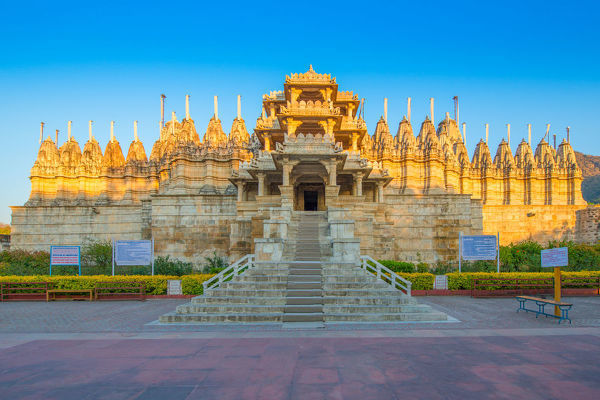Ranakpur Temple: A Marvel of Jain Architecture
Nestled in a serene valley of the Aravalli Range in Rajasthan, Ranakpur Temple is one of the most spectacular and significant Jain temples in India. Located about 90 kilometers from Udaipur and 162 kilometers from Jodhpur, this temple is dedicated to Tirthankara Adinatha, the first Jain Tirthankara. Built in the 15th century, Ranakpur Temple is celebrated for its intricate marble architecture, rich history, and spiritual ambiance that draws visitors from around the world.
Historical Background
The temple was constructed during the reign of Rana Kumbha, the ruler of Mewar, after whom the town of Ranakpur is named. According to historical records, a Jain businessman named Dharna Shah had a divine vision to build a temple dedicated to Lord Adinatha. He approached Rana Kumbha for support, who generously donated land in the tranquil valley for this sacred project. The construction of the temple began in the early 15th century and took around 50 years to complete.
Architectural Brilliance
Ranakpur Temple is a masterpiece of white marble architecture, showcasing the genius of ancient Indian artisans. The temple complex sprawls over 48,000 square feet and features 1,444 intricately carved marble pillars, each uniquely designed. It is astonishing that no two pillars in the entire complex are alike, and their placement is such that they never obstruct the view of the deity in the main shrine.
The main temple is a Chaumukha Mandir, meaning a four-faced temple, representing the four directions and suggesting the omnipresence of Tirthankara Adinatha. The sanctum houses a four-faced idol of Lord Adinatha, made from marble, and radiates serenity.
The ceiling designs, domes, shikharas (towers), and carved toranas (arches) display remarkable precision and attention to detail. The play of light and shadow through the intricately perforated marble creates mesmerizing patterns on the floors and walls.
The Pillars of Beauty
One of the temple’s most mesmerizing aspects is the forest of marble pillars. These pillars are adorned with delicate floral patterns, mythological figures, dancing nymphs, and detailed geometric designs. Despite being built centuries ago, the carvings are so precise that even a thin sheet of paper cannot pass through some of the marble joints.
There is also a fascinating rotating pillar that stands on a ball bearing-like structure, which can be gently rotated despite being carved from solid marble.
Other Shrines and Temples
Apart from the main Adinatha temple, the complex also houses smaller temples dedicated to Parshvanatha, Neminatha, and other Tirthankaras. The Sun Temple, located nearby within the same complex, is another highlight. Dedicated to the Sun God, it features beautiful carvings of celestial bodies and solar motifs.
Spiritual and Cultural Importance
For Jain pilgrims, Ranakpur is a sacred site representing devotion, spiritual enlightenment, and the pursuit of non-violence (Ahimsa), a core tenet of Jainism. The tranquil atmosphere of the temple invites meditation and introspection. Visitors often express a profound sense of peace and calmness after spending time within the marble halls.
Visitor Information
The temple is open to visitors of all religions, though certain areas may be restricted to Jain devotees. Visitors are advised to dress modestly and maintain silence to preserve the sanctity of the place. Photography is permitted in some sections, but not in the inner sanctum.
There is a small fee for foreign tourists, which includes a guided tour or an audio guide, offering valuable insights into the temple’s history and art. The best time to visit Ranakpur is during the cooler months between October and March.
